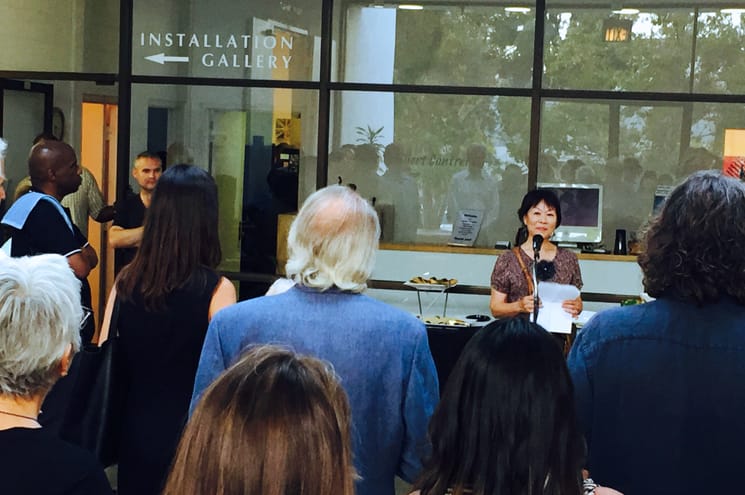Exhibit Shows What ‘Making Up for Lost Time’ Looks Like

Retirement wasn’t satisfying for artist Albert Contreras, wrote David Pagel, professor of art theory and history, earlier this year in the Los Angeles Times. “It left Contreras at loose ends. Painting began to percolate in his head.”
Contreras thought he had accomplished everything he wanted as an artist. He gave up painting and focused on his day job instead: driving trash trucks and resurfacing streets for the city of Santa Monica.
Then, according to Pagel’s article, which also serves as an obituary for Contreras (who died earlier this year at the age of 84), Contreras “dove back in.”
“For the next 20 years, he painted fast and furiously, making up, he often said, for lost time,” Pagel wrote.

Before his death this June, Contreras gave Claremont Graduate University a collection of 132 of his works, several of which are now on display as part of a joint exhibit of Contreras’ work and the work of Jane Park Wells.
Wells is a 1996 MFA alumna whose work has been celebrated in the Huffington Post for canvases that are “sinewy streams of self-reflection and meditations on multiplicity.”
The joint exhibit—“XO, Albert Contreras” and “Jane Park Wells, Hope/Thousand Origami Cranes”—is now on display in the East and Peggy Phelps galleries, 251 East 10th Street in Claremont.
The show runs until September 8.
***

During an exhibit reception held Tuesday night, Jane Park Wells discussed her journey as an artist, which has deep roots in the Claremont Colleges. She first studied at Scripps College and received her BA there before receiving a MFA from CGU in 1996.
Wells was introduced by David Pagel and CGU’s Interim President Jacob Adams, who saluted Wells for her successful career and for burnishing CGU’s MFA reputation with her success.
When it was Wells’ turn, she stepped up to the microphone and described her efforts to continually explore new strategies and to challenge herself, which has led her to the creation of new creative and visual approaches.
That includes “Hope Symphony,” a massive painting installation that covers nearly the entire southern wall in the East Gallery.
Comprising 105 individual square frames, the installation captures the vibrancy of a rainbow as the colors move across the entire wall.
That installation—constructed from individual frames instead of one large canvas—had as much to do with pragmatism as a conceptual idea, she told reception attendees.
“What I did with this picture happened out of necessity,” she explained. “I had to figure out a way to make large pictures that I could handle and move easily on my own.”
She also said that the crane imagery in this exhibit was inspired by visiting Hiroshima and witnessing the many paper origami cranes that are part of the city’s Children’s Peace Monument.
“It really touched me. I have always wanted an opportunity to express hope in my work,” she explained. “I am on the side of hope.”
As a part of the exhibit, visitors are invited to create their own cranes and add them to a canvas that hangs by a worktable. On the table they will find origami paper and folding instructions to create their own origami cranes and express their own wishes in the name of hope.
Visit CGU’s Art Department website for more information about the MFA program.